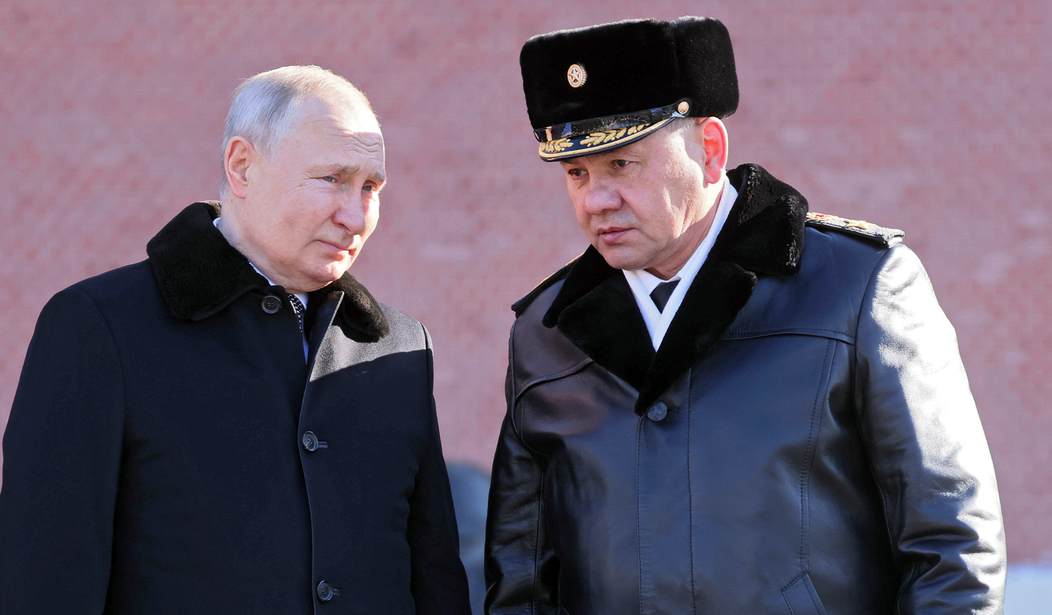This seems to be an increasingly common theme on a global scale. We are continually warned that the United States is running low on arms and munitions and may not be prepared to supply Taiwan if China invades. We are similarly assured that we need to continue spending vast amounts of money we don’t have to arm Ukraine or they will likewise run low and be unable to fend off the Russians. But now their enemy in that conflict is making an identical claim. Vladimir Putin told a group of pro-war bloggers this week that his country is running very low on offensive weapons in general and military drones in particular. And if that shortage isn’t addressed soon, he may be unable to “win the special military operation” in Ukraine. So are these just scare tactics or has the war actually drained the Russian military to dangerous levels? (Politico)
Russian President Vladimir Putin has warned that his armed forces lack the military hardware they need to win the war in Ukraine, while insisting Moscow is ramping up weapons production to fill the gap.
Speaking Tuesday at a meeting of pro-war bloggers in the Kremlin, Putin acknowledged that “during the course of the special military operation, it has become clear there are shortages of many things — precision-guided munitions, communications equipment, aircraft, drones and so on.”
“We have them, but unfortunately we don’t have enough of them,” he said, according to state media. As well as drones, “modern anti-tank weapons are needed, and modern tanks are needed.”
I suppose this is a credible claim. The war in Ukraine has been bleeding the global supply of missiles and other ammunition severely and that would have to impact Russia sooner or later as well. We had already seen reports suggesting that the Russian military was running short of precision-guided munitions, forcing them to use older, cruder firepower. That’s something of a double-edged sword because, on the one hand, it means that they are less able to hit strategic targets. But it also means that they’re misfiring and hitting more civilian neighborhoods, hospitals and churches.
One report from more than a month ago claimed that Russia’s ability to produce advanced weaponry domestically was being hampered by sanctions. They’ve been largely unable to import certain high-tech components required for controlled navigation systems among other things. And they don’t produce those components in their own country.
The subject of combat drones is another matter, however. We’ve known for months that Iran has been sending combat drones to Moscow. And we just learned this week that Tehran is helping the Russians build their own drone factory near Moscow. So, unfortunately, if Putin truly is experiencing a shortage of drones, it may only be a temporary situation.
Meanwhile, Ukraine continues to complain it’s continually running low on munitions. Last month, the EU committed to shipping one million rounds of ammunition to Ukraine, but it doesn’t sound like much of that has arrived yet. Last week, Joe Biden predictably promised another $300 million in military aid as well. But it’s not just a question of money, which Biden apparently believes we can continue to endlessly pluck off of the magical cash tree in the Rose Garden with no consequences. There has to be someone making the munitions so they will be available to purchase. And the global marketplace still hasn’t managed to catch up.
Returning to the drone question for a moment, this is yet another reminder of how this era of stunning technological innovations may not work out brilliantly in all situations. As we pack even more artificial intelligence into drones and other machines, we’re reaching the point where we’re going to be letting our robots do our fighting for us. And having robots fight each other doesn’t bring about the end of a war, so they’ll likely be attacking civilian targets in larger numbers. This doesn’t bode well for the future of our military.








Join the conversation as a VIP Member